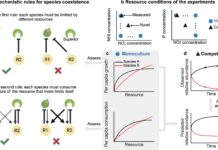The sun erupted today (November 14) with an intense X4-class flare—the second-strongest solar outburst of 2025—originating from the highly active sunspot region AR4274. This flare triggered significant radio blackouts across central and eastern Africa, disrupting long-range communications.
Flare Details and Impact
The eruption peaked at 3:30 a.m. EST (0830 GMT), as monitored by NOAA’s Space Weather Prediction Center. The resulting radio disruptions, classified as strong (R3) on the space weather scale, affected the sunlit side of Earth most severely. These blackouts occur because the flare’s electromagnetic radiation rapidly ionizes the upper atmosphere, interfering with radio wave propagation.
Sunspot Activity and Coronal Mass Ejection
AR4274 is nearing the western limb of the sun, meaning it is rotating out of view. This flare represents a final, potent burst of activity from one of the most prolific flare-producing regions of Solar Cycle 25. Accompanying the flare was a coronal mass ejection (CME)—a large expulsion of plasma and magnetic field. However, due to the sunspot’s position near the edge of the solar disk, the CME is less likely to be Earth-directed. Space weather forecasters are analyzing coronagraph data to determine if any portion of the CME could still impact our planet in the coming days.
Understanding Solar Flare Strength
Solar flares are categorized by their intensity, ranging from weakest to strongest as A, B, C, M, and X. Each letter represents a tenfold increase in energy. X-class flares are the most powerful, with the number following the X indicating the flare’s strength. An X4 flare places this event among the most significant solar outbursts of the year.
Key Differences: Flares vs. CMEs
It is important to distinguish between solar flares and CMEs. Flares release bursts of electromagnetic radiation that reach Earth in about eight minutes, causing immediate disruptions to radio communications. CMEs, on the other hand, are slower-moving clouds of plasma that take one to three days to reach Earth, potentially triggering geomagnetic storms that affect satellites, power grids, and navigation systems.
The Significance of Solar Cycle 25
This event underscores the increasing activity of Solar Cycle 25, the current 11-year cycle of solar activity. As the cycle progresses towards its peak (expected in 2025–2026), stronger and more frequent flares and CMEs are expected. Space weather monitoring and forecasting are crucial for mitigating the potential impacts of these events on Earth-based and space-based technologies.
The sun’s activity continues to be a dynamic and sometimes disruptive force, requiring ongoing vigilance and preparedness














































